ONE TEENY-TINY SPOILER FROM THE SEASON FINALE
After writing 23 non-stop weekly reviews for the latest seasons of STAR TREK: DISCOVERY and PICARD, I took a break for the first season of STAR TREK: STRANGE NEW WORLDS. Why? Because nearly everyone appeared to love each episode…and so did I. It seemed silly to just write about how great each episode was every week.
Not that every episode was perfect. I had a few complaints here and there, like turning the Gorn into the xenomorph monsters from Aliens and killing off my favorite character just nine episodes into the series (you bastards!).
But overall, I have been loving this new series right out of the starting gate in ways I haven’t loved Discovery and Picard. And it seems from social media and online reviews that most fans feel the same way about Strange New Worlds (with the exception of those who are still counting the days until ALEX KURTZMAN is fired for the seventeenth time!).
“The show just FEELS like real Star Trek,” seems to be the general consensus among fans. But WHY does it feel more like “real” Star Trek? What does “real” Star Trek even mean?
Some have said, with a certain amount of vagueness, “Well, it’s more optimistic.” Yeah, kinda. But some episodes have been a bit sad, too. The one where Dr. M’Benga has to part with his daughter in order for her to have a guaranteed chance at life…man, that was a downer! Another episode ends with the sacrifice of a child in order to keep a planet of floating cities from crashing down. (Man, it’s tough to be a kid on this chow!) And don’t get me started on Hemmer’s death-dive! So I’m not sure that “optimistic” is the secret sauce of this show.
“Well, it’s episodic, not serialized…” say others, and yes, that’s true—although character arcs like Spock’s marriage, Uhura’s doubts, and M’Benga’s dying daughter carried over through multiple episodes. But is “real” Star Trek simply defined as one-story-per-episode? The Dominion War lasted through multiple seasons of Deep Space Nine, and Enterprise devoted an entire season to finding and dealing with the threat of the Xindi. Were those NOT “real” Star Trek?
So rather than writing a review, I’d like to instead attempt to answer the question of what mades this series feel like “real” Star Trek—and so quickly gain the support of the vast majority of fandom—while Discovery and Picard have struggled to achieve that same reception.
Wanna play…?
DECIDING WHERE TO DRAW THE LINE
In order to write this blog effectively, I need to first define which shows are to be considered “real” Star Trek and which are not. And that’s the reason that I keep putting “real” in quotation marks (like I did for “woke” a few months ago)…because the word will have different meanings for different people.
The obvious dividing line for “real” seems to be Paramount-produced Star Trek (anything before 2005’s cancellation of Enterprise) versus CBS-produced Star Trek (beginning with the premiere of Discovery in 2017). And I’m going to leave out the J.J. ABRAMS films entirely, as they’re their own species of Star Trek.
Some could argue that only TOS is “true” Star Trek, and many did back in 1987 when Next Gen launched without Kirk, Spock, and the rest. Later on, DS9 encountered resistance because Star Trek “must” be set on a spaceship…otherwise you boldly STAY. Voyager was stuck far away from Federation space and anything remotely reminiscent of Star Trek. And of course, Enterprise was initially criticized by a number of fans as being a step backwards and not looking anything like a “true” prequel.
So yes, my cut-off could be pretty much anywhere. But after four seasons of Discovery and two of Picard, it seems that neither has crossed the Rubicon into widespread fan acceptance…whereas TNG, DS9, VOY, and even ENT were generally welcomed into the fold by the ends of their respective first or second seasons. And since a number of fans complain “NOT real Star Trek” when talking about two two CBS-produced series, we’ll be drawing the border between pre-2005 and post-2017.
BUT!!!!
Before anyone starts accusing me of simply bashing Discovery and Picard, that is NOT my intent here. Those two shows are each strong in their own ways. Indeed, if they weren’t billed as “Star Trek,” many fans would likely have overlooked many of the items I’m about to list. But being labeled and billed as “Star Trek,” there was a certain set of—shall we say?—expectations among fans… expectations that were apparently not met in the minds of many fans.
So what exactly did Strange New Worlds do that Discovery and Picard didn’t that made the new series feel more like those pre-2005 shows? Here’s the first five aspects that I think made the biggest difference…
10. THE MAIN TITLE SEQUENCE
Back in 2017, who here watched that tiny U.S.S. Discovery flying past a giant flower in front of a beige background in the opening credits and thought, “Now, THAT’s a Star Trek!”?
Ever since Kirk’s Enterprise first whooshed across our TV screens in the 1960s, Star Trek has begun by serving fans shot after delicious hero shot of whichever ship or station was the “star” of the show. The first series to break that tradition, Star Trek: Enterprise, received mixed reviews for its main title sequence (granted, some of that was due to the choice of theme music, as well).
But Discovery and Picard, well, they sorta went off the rails. It’s not that they have particularly “bad” title sequences—I personally think Picard‘s is quite elegant and beautiful. But neither “feels” like Star Trek as it existed prior to 2005. And indeed, if you look at the titles sequences for LOWER DECKS and PRODIGY, each of those displays a gorgeous parade of hero shots of either the U.S.S. Cerritos or the U.S.S. Protostar, and we instantly know those are Star Trek series.
That’s not saying that Discovery and Picard did anything wrong. This is simply about establishing a connection to earlier Trek series. SNW, Lower Decks, and Prodigy do that almost immediately…and even subconsciously. Discovery and Picard make viewers work much hard to get a Star Trek “feel” from the main title sequence.
9. ESTABLISHING SHOTS ALLOW YOU TO SEE THE SHIP
Very closely related to the previous item, this one focuses more on what happens during the episodes themselves. Whether flying through space, orbiting a planet, surrounded by enemy ships, or being grabbed by a giant green hand, TOS set the standard of having establishing shots of the U.S.S. Enterprise under captain’s logs or even just as transitions between scenes. TNG, DS9, Voyager and Enterprise followed suit with establishing hero shots of their main starship or space station.
And then came Discovery. While the show has done much to correct what I am about discuss, much of the first season left out establishing shots of the U.S.S. Discovery much of the time. When we did see the ship, it was darkly lit, and often either too closely zoomed in or too far away to get a proper feel for what the ship looked like (not that you can do much with a big triangle, a smaller circle, and two sticks). But while I spent most of my middle school history classes in the early 1980s doodling Enterprises (original and refit) in my notebook, I doubt many school kids are sketching the U.S.S. Discovery or would even know the details of what that starship looks like as intimately as I knew the NCC-1701.
However, I do want to acknowledge that more recent seasons of Discovery feature more establishing shots of the ship that show the ship clearly…and now my only complaint is those damn detached nacelles!
As for Picard, stick an asterisk in that one, as the La Sirena wasn’t even seen in the first couple of episodes of season one and then spent the vast majority of season two crushing uncounted grapes to death in a vineyard in La Barre, France. But honestly, I couldn’t doodle an accurate La Sirena if you held a Klingon disruptor to my head!
SNW, on the other hand, has been very obliging with their establishing shots of the new/old U.S.S. Enterprise, especially in the gorgeous aforementioned opening title sequence but also in establishing shots. Yeah, it’s not the original from TOS, but that starship has sailed, folks. So if we need to be stuck with a new design, at least don’t be afraid to show it! And show it, they do…clearly, from decent and varied angles, maybe a little dark at times but lit up enough to see what it looks like. And in the end, Star Trek should show off its starships!
8. NO SEASON-LONG STORY ARCS
K.I.S.S. – Keep It Simple, StarTrek…and fun! Star Trek had aired four full series (five if you count the animated series) and was in the third season of its next series before it attempted a season-long story arc with the Xindi on Enterprise. DS9 came close with the final 10 episodes of season seven, which formed a mostly continuous story ending the Dominion war, but let’s face it: Star Trek wasn’t really known for season-long story arcs.
Of course, that was then. Now, season-long story arcs are de rigueur on streaming TV! Just try to name a streaming show that isn’t serialized with one main story per season…I’ll wait. No, I won’t, this is a friggin’ blog! Anyway, when Discovery came out of the starting gate, was it really a surprise to anyone that there was a season-long story arc?
And it was a mess!
Season two was another long story arc—the Red Angel—then season three was The Burn…and season four was the Dark Matter Anomaly (DMA) along with species 10c. And each episode had to spend precious time providing exposition of what had come before so all the viewers would be caught up. And then the same thing happened with Picard.
Not that there was anything inherently wrong with that, mind you! Stranger Things, The Expanse, The Boys, the new Lost In Space, and countless other streaming shows do it all the time, and it works just great. I love those shows.
But it isn’t what Star Trek did for nearly 40 years and 700 episodes. While I generally enjoy Discovery and Picard, they don’t feel as much like Star Trek to me as Lower Decks specifically because the latter doesn’t have season long story arcs. And that’s one of the reasons that Strange New Worlds feels more like traditional Star Trek, too. Maybe the future of Star Trek is season-long story arcs. But right now, when long-time fans think about Star Trek, that’s not what comes to mind.
7. A TRUE PREQUEL
Let’s face it, “new” Star Trek was never going to look exactly like TOS. Gumdrop buttons and tight velour tunics might have worked back in the late 1960s, but they’d turn modern Star Trek into a laughing stock if done today (at least for anyone under the age of 35). Heck, even Star Trek: Enterprise, which took place a century before Kirk’s time., looked more modern than TOS could ever hope to. So despite taking place only a decade or so before Kirk’s legendary five-year-mission, Star Trek: Discovery was always going to look more modern…possibly a lot more.
But then the production designers took things waaaaaaaay over the top!
The Starfleet uniforms on Discovery weren’t anywhere close to what was familiar to fans (bright red, gold, and blue-colored shirts). The Klingons make-up was ridiculous (so much so the creators decided to give the bald Klingons hair in season two). And when the lead production designer issued an edict to the CGI people that there would be no cylindrical nacelles on any Starfleet vessel…well, any visual connection to previous Star Trek went out the window. And considering that the new sets were always going to look different and “sleeker,” the creators were leaving fans with almost nothing nostalgic to cling to other than the chest emblem…and even that was weird.
In this way, Picard had it easier, as that show could take any design approach it wanted because it was 25 years after TNG. But honestly, they also learned from the mistakes of Discovery‘s first season and kept the uniforms looking TNG-ish enough to give us fans a lifeline to our cherished memories. And the Starfleet ships in season two—exteriors and interiors—were also quickly recognized and easily accepted. And hey, that’s all we ever wanted.
SNW just got it all right from the get-go. Yes, the Enterprise would look a bit different. The sets would be shinier, the ship a bit sleeker, and the uniforms not exactly velour. But the costume designers made sure to have division colors that were saturated primary colors, the ranks braids were on the sleeves, and overall, if you squinted just right and kept an open mind, a fan could accept this as Star Trek in a way that the metallic jogging suits of Discovery‘s early seasons didn’t let us do. You could never “squint just right” enough to ever see Discovery as anything close to TOS. On SNW, while you still have to squint a LOT, it’s easier to make the mental connection to what came before (as long as you don’t look at the Gorn!).
6. MUCH LESS OF A “MANIC/DEPRESSIVE” PRESENTATION
Bipolar disorder affects 2.3 million Americans…plus one current Star Trek television series. When someone suffers from this affliction, they oscillate between periods of extreme, energetic mania and severe, debilitating depression. But in the case of Star Trek: Discovery, the two extremes often happen simultaneously.
Every television series follows a certain creative vision in terms of presentation. TNG, for example, was lit extremely brightly. Some (many) directors of that series felt stifled by the over-lighting requirement. For comparison, there was no such requirement in the film Star Trek Generations, and you can see the difference. But that was the edict issued from those at the top.
In the case of Discovery, the edict was kind of the opposite. The story was birthed in the thematic despair of a disgraced first officer (Michael Burnham) and the horrors and struggles of a war with the Klingons. The U.S.S. Discovery, at the beginning, was a dark ship both in terms of mood and also of lighting. But had the creative direction called for bright TNG-level lighting, the series would have felt dissonant to the viewer. And so the instructions to each director and director of photography was “go dark.” In this way, the series, especially in the first two seasons, felt generally depressing. Indeed, when you added in the insidious evil scheming and drpravity of the four Mirror Universe episodes, the series began almost drowning in its own darkness. (Thank heaven the addition of Captain Pike in season two introduced in at least a little levity!)
At the same time, however, there was another artistic instruction given to each director (a few of them have talked about it in interviews): always be moving the camera. Watch any episode of Discovery—even as recently as season four—and the camera moves more than a hyperactive 5-year-old who has just eaten three desserts! Pans, zooms, shaky cams, dollies, circular orbit shots, upside-down rotations…you name it! The camera must always be moving to keep the series visually dynamic and compelling, even when it’s just a quiet conversation between two characters. Look for it, and you’ll never watch Discovery the same way again (and possibly get seasick!).
This is the manic aspect of the show, and it hasn’t really stopped. Likewise, in the early seasons (but less as the series went forward) many episodes contained an almost-continuous musical score. While the music for Discovery is excellent, music creates and leads emotional reactions from the viewer. So too much music on top of everything else doesn’t leave any resting time for your eyes, ears, mind, or heart. In short, it was (and often still is) exhausting to watch Discovery.
In fairness to Picard, there is MUCH less constant camera movement in that series and not nearly as much continuous background music. And indeed, I don’t get nearly as drained watching that series.
But compare both shows to Strange New Worlds.
The vast majority of scenes in the episodes of this just-completed first season are made up of fixed-camera shots. When the camera does move, it’s very subtle (a little handheld shake, maybe) and very traditional (slow pan, gentle zoom). That’s not to say the camera never moves. SNW has had some very dynamic shots that involved things like zooming from an ultra-wide angle of the bridge right up to a close-up of Pike in the command chair and of course, the spinning shot of Kirk rolling the U.S.S. Farragut during the attack on the Romulan bird-of-prey. But those moves are used sparingly and, in my opinion, become even more impactful because of that.
Also, SNW doesn’t have continuous background music, nor is it lit particularly darkly. To be fair, it’s also not nearly as bright as TOS or TNG, but it’s much brighter than either Discovery or Picard. Indeed, those two series’ set are actually painted darkly to “eat” light and keep things muted. SNW‘s sets are painted in brighter colors to help light those scenes better, even if the lighting is sometimes muted. In some ways, this gives SNW the best of both worlds: shadows and contours on the characters’ faces and bodies without being overly dark.
Now, remember, I didn’t say what Discovery does is inherently wrong. That style of energetic cinematography is getting quite common on modern television. But between 1966 and 2005, when Paramount was producing Star Trek episodes, cameras didn’t move that much. And when they did, the moves were fairly simple and traditional—none of this starting upside-down and rotating the camera into right-side-up stuff! The closest thing we’d get to those kinds of wacky shots were sequences like Data dreaming that he’s a bird flying through the corridors on the Enterprise-D.
So no, this isn’t meant as a bash on Discovery or Picard. Instead, I am simply answering the question I posted at the beginning: why does SNW feel more like “real” Star Trek?
And next time, I’ll share the remaining top five reasons…and the first one is probably going to get me into a bit of trouble!

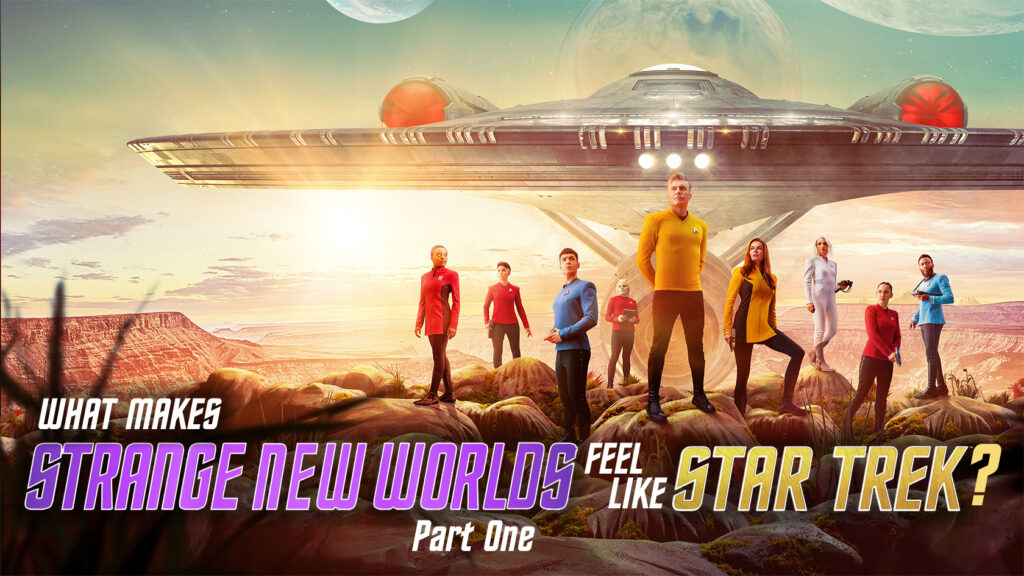
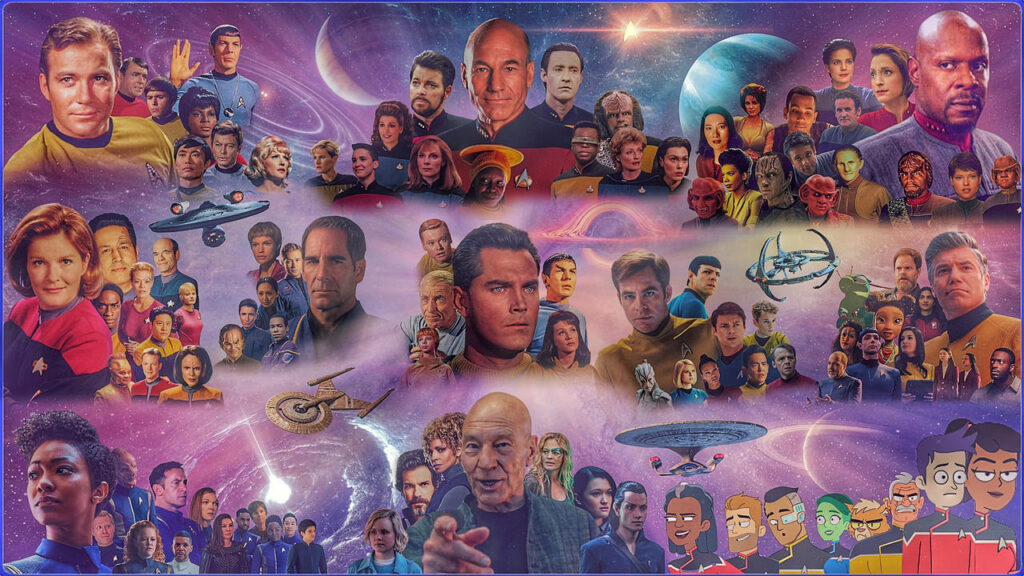
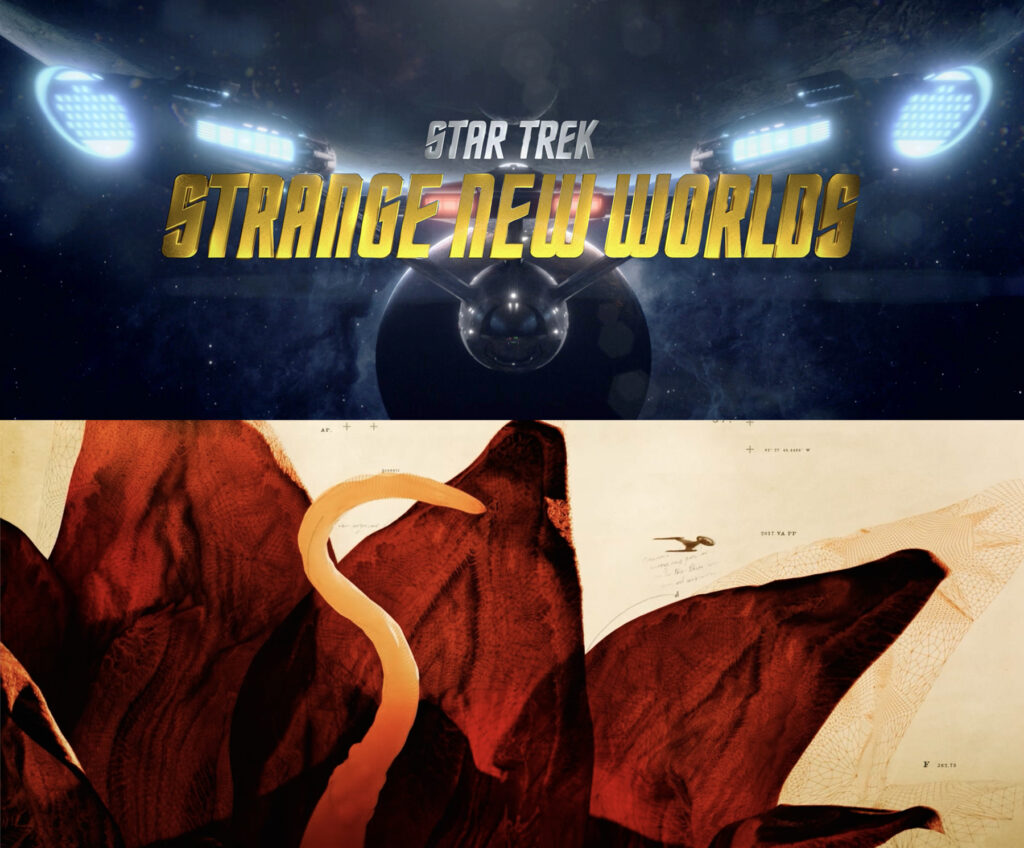
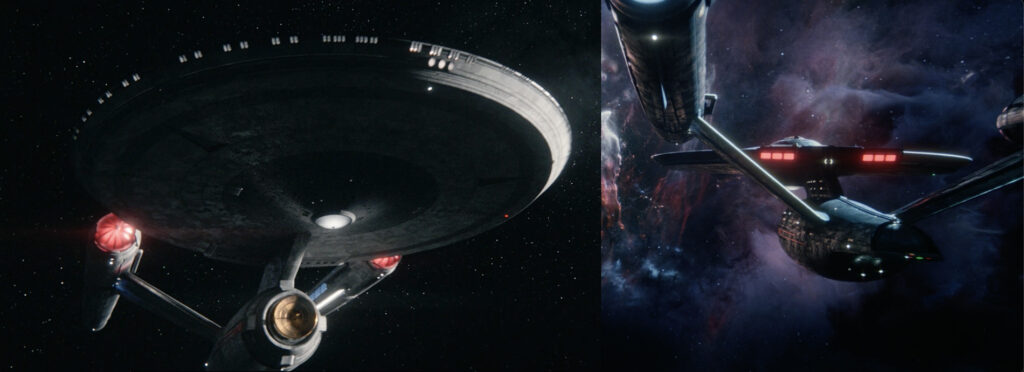
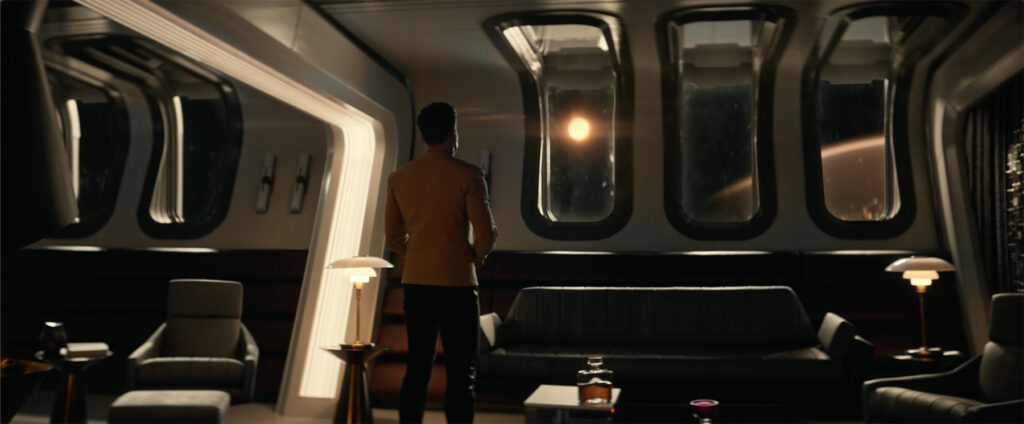
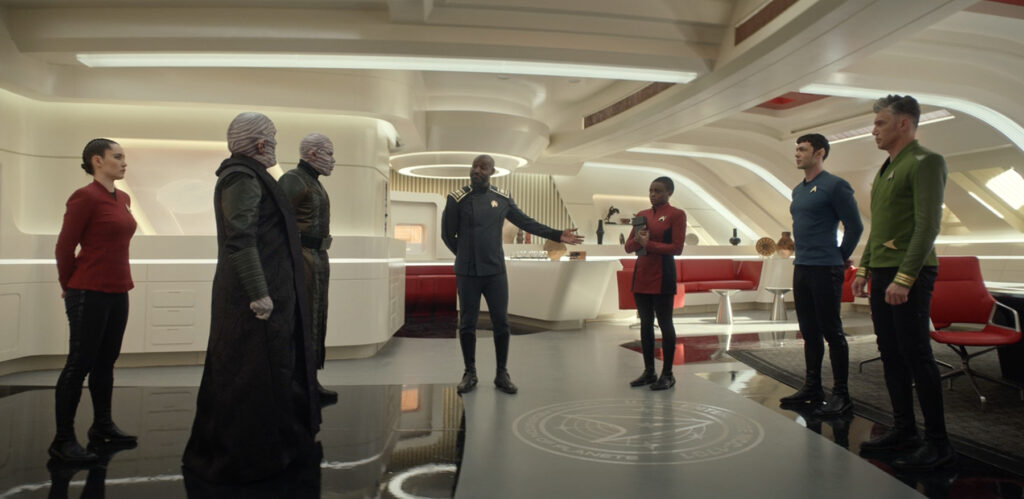
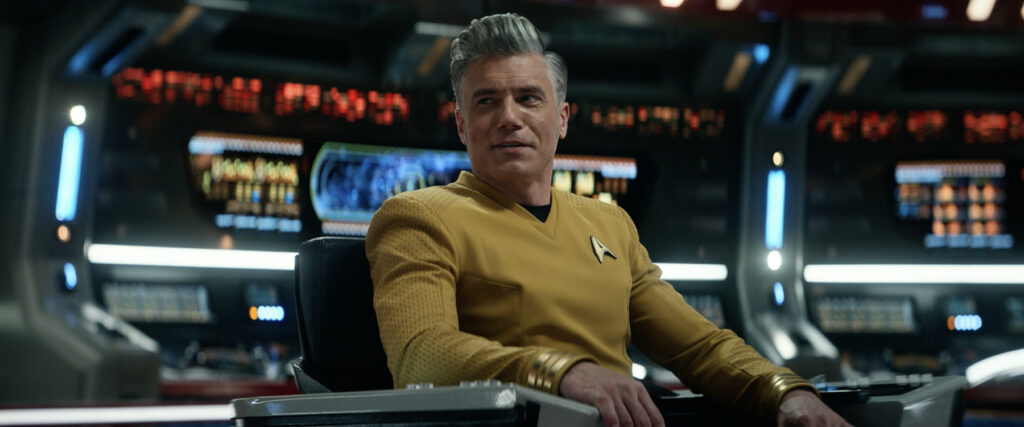
Red Alert! Shields Up Jonathan! As for SNW actually “feeling” more like “real” Star Trek, I wouldn’t exactly go that far. I would say it’s marginally better than the other 2 most recent shows. But, I have way too many complaints to list here. Mostly, this new Pike seems to be a bit less commanding than he was in Disco. More of a wimp, now. More of that Hollywood “woke” garbage. Play down traditional male bravado, and replace it with nearly insubordinate females looking uncharacteristically “tough”! SMDH. At least in the final episode, they portrayed Captain Kirk a little better, or more in keeping with his known persona. After they impune his character first! As for the episodic nature, I’m ok either way, actually. But, if it’s a season long arc, please release the entire thing, all at once. As for example, recent shows on Amazon Prime, The Terminal List & Reacher did. I rather enjoyed the “8 hour” movie type format, binge watched of course. Perhaps Disco & Picard would have benefited more if that were the case? I do agree with you on the differences in lighting, colors, & photography. The need for a more up to date tech look doesn’t bother me in the least, except for the Gorn that is. Again, writers these days just pale in comparison to decades gone by. At least we’re ST is concerned.
I’m energized to comment on your 8. NO SEASON-LONG STORY ARCS
DS9 (and Babylon 5) had years long story arcs and in the case of B5 a series long story arc. But not every story put the arc front and center. Picard especially was trapped by having the action in one place in the past. I’m hoping season 3 is not caught by the same issue.
By contrast, TOS had any number of fun episodes and a real sense of humor in the interplay between Kirk, McCoy and Spock. DS9 had “Move Along Home”, Quark & Co crashing in Area 51 and so forth. To steal an advertising quote “the pause that refreshes” is part of “real” Trek.
I’ll hold additional comments until I read part 2.
The only true season-long story arc in Star Trek was the Xindi. The Dominion War was more of a “period of time” and a general conceptual unifier for episodes. The reason I say this is because the episodes during the Dominion War did not all specifically advance the storyline, step by step (until the final 10 episodes of DS9 season seven). They were simply set during the Dominion War, maybe mentioned that it was going on, and occasionally had major episode arcs for changes in the set-up like the loss of DS9 and retaking it.
Discovery was a little like that in terms of the Klingon War, but the Tardigrade storyline was completely serialized leading into the spore drive and Mirror Universe arcs. Picard was completely serialized, as was Discovery by season 2.